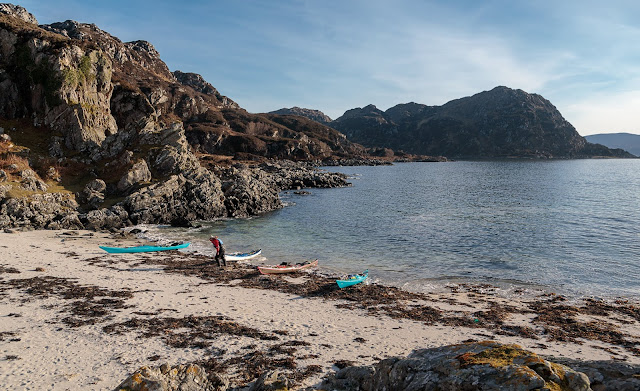A light tail wind let me try the new prototype sail from Scottish firm KCS.
Seconds ago we had been battling into a winter storm, now we were paddling past a forest of birch and alder that was bursting into leaf. It was filled with the song of willow warblers and cuckoo's persistent calls echoed round the corries above.
We were now getting a bit hot as we had been paddling against the incoming spring tide. Fortunately as we neared the narrows, we picked up a helpful counter eddy. This carried us effortlessly the final kilometre to our intended camp site.
Not wanting the day to end, we stopped at a little rise to savour the view back up to the head of the loch. What a transformation. We hardly recognised the azure blue, sunlit waters as those which we had just paddled under a leaden grey sky.
We even got the tents up in the sunshine. Of course this was still Loch Hourn and that would not last...


























































